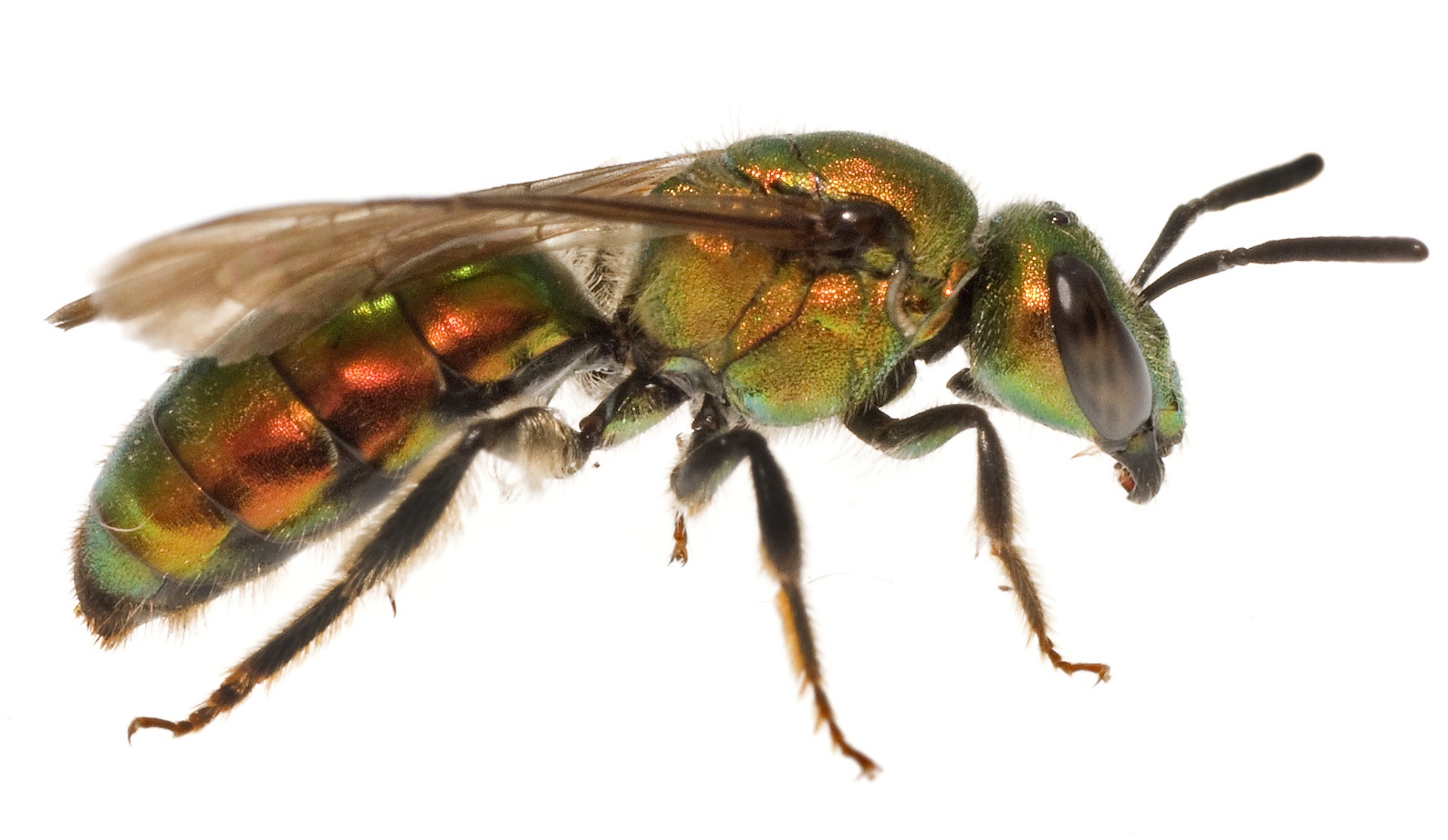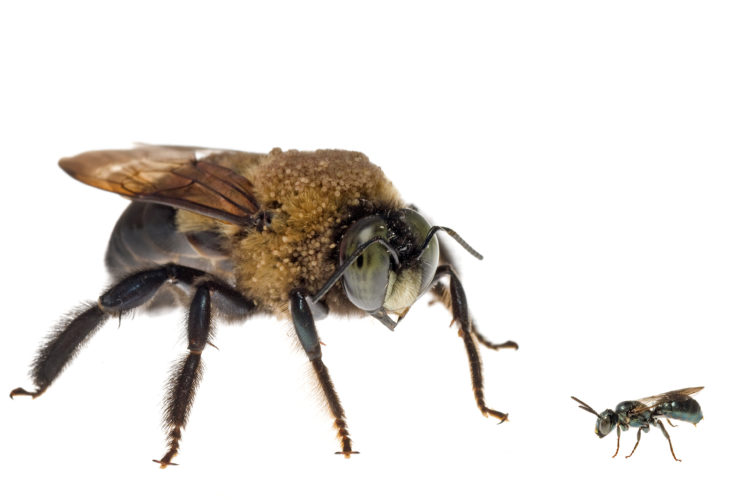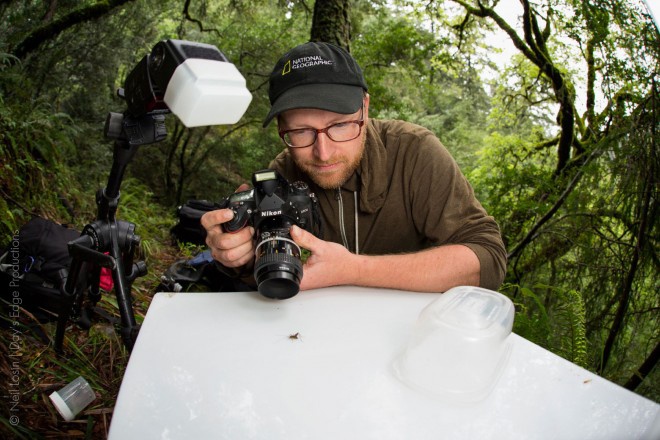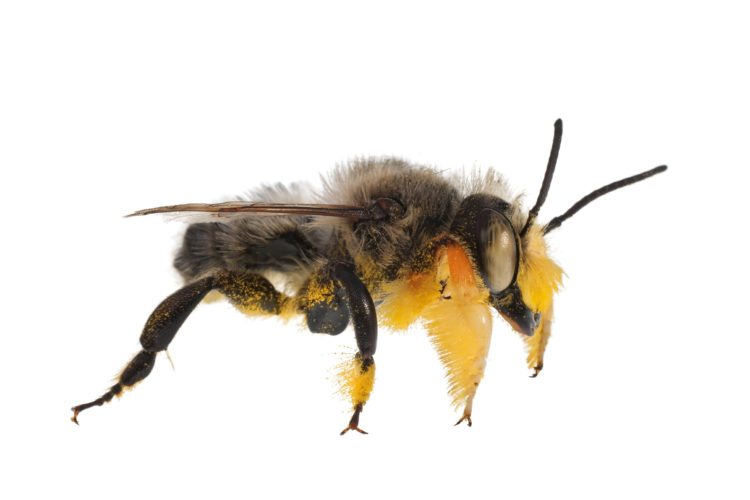We have much more to do and your continued support is needed now more than ever.
Sharing a Passion for “Beautiful Bees”

Like most people, Clay Bolt once pictured the familiar black-and-yellow-striped honey bee as soon as he heard someone say the word “bee.” These much beloved but beleaguered insects were brought to this continent from Europe in the 1600s.
As for North America’s more than 4,000 native-bee species, “beyond bumble bees, I knew virtually nothing,” he says. To remedy that, Bolt, a nature photographer specializing in macro images, headed outside to his South Carolina backyard a few years ago and began making portraits of the bees he encountered there.
What he discovered so amazed him that in 2014 Bolt launched the project “Beautiful Bees,” whose goal, he says, “is to inspire people to appreciate these incredible animals that contribute so much to our lives as pollinators and as beautiful inhabitants of our world.”
Bees could use some of that recognition. According to biologists, native bees across North America are facing formidable threats, from habitat loss and disease to climate change and pesticides. Many native species, including four once common and widespread bumble-bees, have vanished from large swaths of their former ranges— threatening the multitude of crops and native plants that depend on them for pollination.

“Honey bees do have problems of their own,” Bolt admits, “but they’ll probably be alright.” Somewhat like cattle, these bees are highly managed, largely domesticated animals with well-recognized economic value. Although native bees contribute at least $3 billion a year to the U.S. farm economy, and are linchpins of most terrestrial ecosystems, they “easily could blink out because so few people are paying attention to them, ” says Bolt.
“By sharing stories and images of these creatures, I hope to get North Americans to take notice and do their part to help native bees.” — Clay Bolt
Featured in an article, “Being There For Bees,” in the current issue of National Wildlife magazine, Bolt’s photographs do indeed possess powers of persuasion. While many of his images are traditional macro shots — close ups of insects feeding on flowers, for example — some of the most stunning show his subjects removed from their habitats in front of a stark white background: a field-studio technique developed for a project, “Meet Your Neighbours,” that Bolt cofounded in 2009. “By isolating subjects from their natural backgrounds—which can be overwhelming — the technique makes it easier to see details and appreciate the beauty of small creatures,” he says.
The rationale may sound obvious, but making these photographs is anything but simple. After all, most native bees are fast flyers, and many are no larger than a grain of rice. “My first step — and what I tell any beginning wildlife photographer — is to do the homework and get to know your subject,” Bolt says. “What kind of flower does this bee prefer? Where and what time of day is it most active?”

Once Bolt is in the right place at the right time, he sets up his field studio: a large square of white Plexiglas supported by a PVC frame with two external flash units attached. Only then, bug net in hand, does he head out into field or forest in search of his quarry.
When Bolt captures a target bee, he transfers it to a small vial, ferries the insect back to his field studio, and releases it into a small plastic food-storage container. “The bee usually flies around for a few seconds, then stops to clean its wings,” he says. At that point, Bolt removes the plastic container and — with luck — gets his shot within minutes. “I try not to keep a bee more than a few minutes so it will not get stressed,” he says. “The well being of the subject always comes first.”

Those subjects seem to appreciate his concern. Despite taking hundreds of photos during the past two years, Bolt has been stung just twice — “and both times it was my fault,” he says. But his good fortune is more than a lucky break: “One of many things the public doesn’t understand about native bees is that they never or very rarely sting,” Bolt says.
To see more of Bolt’s native-bee images, visit the Beautiful Bees website. Check out a trailer for his new film: A Ghost in the Making: Searching for the Rusty-patched Bumble Bee, and find out when and where you can see it.

To find how to help bees and other pollinators at home by growing native nectar-producing plants, providing nest sites and eliminating pesticides, check out tips from the National Wildlife Federation’s Garden for Wildlife™ program.
You can also help bees by joining the Million Pollinator Garden Challenge.






















